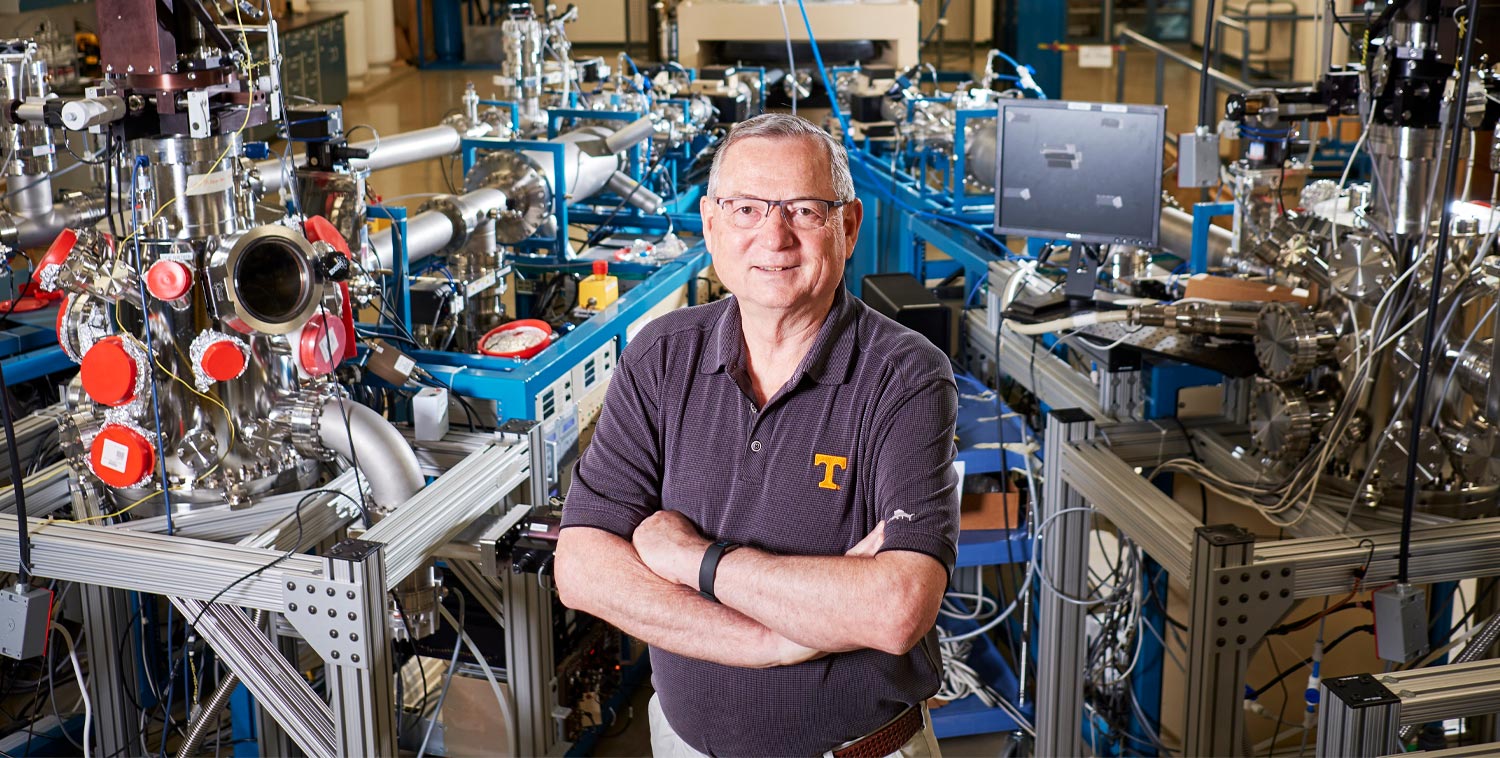Ions: The Good and The Bad
[lead]When UT-ORNL Governor’s Chair William Weber began his career studying the effects of radiation materials, his work was constricted, somewhat dangerous, and time-intensive.[/lead]
Highlights
- UT’s Ion Beam Materials Laboratory has an ion beam accelerator
- It speeds up the effects of radiation without human exposure
- Outside researchers can rent the space for their own tests
- The Ion Beam Materials Laboratory is available for use. View the rates.
“We always had to put on protective clothing and handle the materials in glove boxes,” he remembered. “The materials were remotely handled using tweezers or tongs, and there was always a background level of radiation.”
But now, what took years of study can be done in just a day without the risk of radiation and the confines of glove boxes.
How? UT’s Ion Beam Materials Laboratory (IBML), which is home to an ion beam accelerator.
The accelerator has the ability to speed up the effects of radiation without actually exposing people to them. It does this by energizing ions, then shooting them at materials mounted in one of four target chambers. The lab, housed in UT’s Senter Hall, is the brainchild of Weber who directs it.
In general, IBML harnesses the power of ions to study their good, bad, and not-so-ugly abilities as it relates to materials interactions.
So, what’s the good? Weber uses the ion beams to improve existing materials by modifying their magnetic, electrical, or optical properties, thus changing their functions and abilities.
We can add ions of different elements to materials and force them into a material even if they don’t want to be there. We have the power to induce transformation to phases that wouldn’t exist naturally or in normal manufacturing processes.”
The possibilities of this fundamental work, funded by the US Department of Energy’s (DOE) Office of Science, are seemingly endless—from improving semiconductors and information transfer between devices to developing mini-labs on a chip.
Weber also studies the so-called bad side of ions created in nuclear environments—their damaging effects on materials, but without the radioactivity.
“These ions act as billiard balls on a pool table,” Weber explained. “They knock the atoms inside materials around but they also excite the electrons. So, it is very challenging to understand and model their behavior.”
By using the IBML to shoot heavy ions at materials, Weber and other researchers simulate the radiation effects of what sixty years inside a reactor, or hundreds of thousands of years sitting in nuclear waste would look like in order to predict their performance in a nuclear environment. The work is especially relevant to making nuclear power safer.
A lot of our research is aimed at improving the accident tolerance of fuel in our reactors. Specifically, we are trying to improve the fuel cladding so it doesn’t rapidly oxidize.”
Oxidization can occur on the zirconium-based metal cladding when exposed to high temperature steam during an accident. When rapid oxidation occurs, it exposes the fuel to the air creating the danger for release of radioactive materials.
With funding from the DOE Office of Nuclear Energy, Weber also researches the performance of new materials that could be used in the next generation of reactors and how their radiation tolerance could be improved. His research is also useful for nuclear waste disposal plans.
Finally, Weber’s work peers into the not-so-ugly side of ions by harnessing their ability to reveal the chemistry of materials.
Weber has been surprised and fascinated by the way ions behave for more than forty years. Ironically (or ionically), Weber began his work with radioactive materials as an undergraduate student during a summer internship at Oak Ridge National Laboratory. Now, the career of this joint UT-ORNL Governor’s Chair has come full circle as he is now the one training the next generation of scientists.
Weber has accomplished a lot—with or without the power of an ion beam accelerator—and he can only imagine what his students will accomplish with the power of ions at their fingertips.
